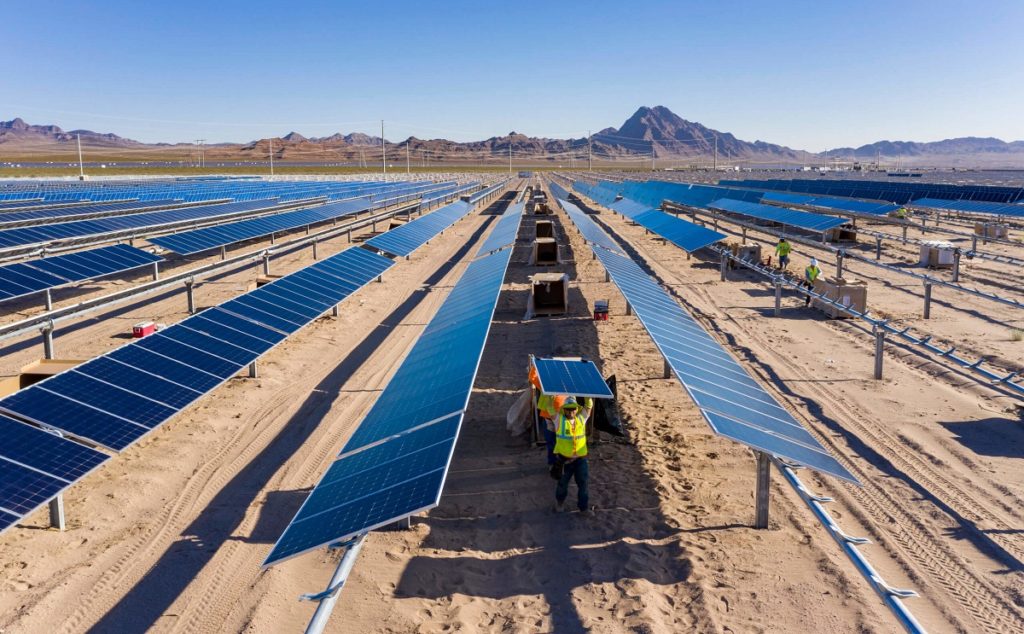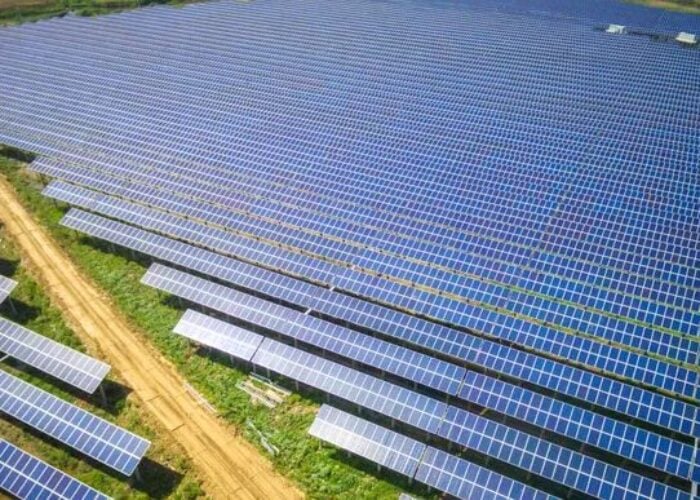
The US solar sector smashed multiple records in 2020 as the industry recorded an “historic” fourth quarter, teeing up a forthcoming decade where installations are expected to more than quadruple.
Those figures, included within the new edition of the US Solar Market Insight report, jointly published today (16 March 2021) by the Solar Energy Industries Alliance and analyst firm Wood Mackenzie, illustrate a significant rebound for US solar towards the end of the year, having spent large swathes of 2020 curtailed by the COVID-19 pandemic.
Unlock unlimited access for 12 whole months of distinctive global analysis
Photovoltaics International is now included.
- Regular insight and analysis of the industry’s biggest developments
- In-depth interviews with the industry’s leading figures
- Unlimited digital access to the PV Tech Power journal catalogue
- Unlimited digital access to the Photovoltaics International journal catalogue
- Access to more than 1,000 technical papers
- Discounts on Solar Media’s portfolio of events, in-person and virtual
Around 19.2GWdc of solar was installed in 2020, the analysis shows, a 43% increase on installations in 2019.
That figure was achieved largely as a result of an “historic” Q4, when around 8GWdc of solar was installed as developers and installers alike worked through “massive backlogs” of projects that had been slowed by the spread of the pandemic earlier in the year.
At 8GWdc, US solar smashed its own record for quarterly deployment, with installs up by nearly a quarter (22%) on the previous record-setting quarter of Q4 2016.
Of that 8GWdc, more than 6.3GWdc fell under the utility-scale solar bracket, taking total utility-scale solar deployment in the US for 2020 to just under 14GW.
Meanwhile, residential solar installations rose by 11% year-on-year to around 3.1GW, falling short of the 18% growth recorded in 2019.
Non-residential solar installations fell 4% year-on-year to around 2GW, which SEIA and WoodMac attributed to delayed interconnections and slipping project timelines.
The significant jump in solar installations throughout the year contributed towards solar PV capturing a dominant share of new electricity generation installed in the US for a second consecutive year, with solar accounting for 43% of total new power generation in the country.
California predictably maintained its status as the leading state for solar, installing just over 3.9GW in 2020. Texas was also unmoved as the second-ranked state, however its deployment jumped 1.4GW in 2019 to 3.4GW in 2021, indicating that California’s position could be under threat. Virginia also recorded a major leap up the state-by-state rankings, rising from 2019’s position of 19th to fourth following a near 11-fold increase in deployment to 1.4GW.
Return of the roaring twenties
WoodMac and SEIA’s analysis also illustrates solar’s unstoppable rise in the coming decade, with WoodMac publishing for the first time installation projections over the next ten years.
The consultancy expects records to continue to fall over the coming years. More than three-times as much solar is expected to be installed over the next decade than has been installed to date, taking the US’ total cumulative installed solar capacity from just under 100GW of installed capacity today to more than 400GW by 2030.
Utility-scale solar is to play a significant role in this increase, aided by the two-year extension of the investment tax credit (ITC) at the end of last year. That policy decision increased WoodMac’s solar forecasts for 2021 – 2025 by 17%, adding a further 17.7GW.
But it is not just utility-scale solar that is expected to grow. SEIA and WoodMac also pointed towards forecasted growth in the residential solar landscape, driven by the introduction of new financial products and cheaper prices helping the technology become more prevalent on consumer rooftops.
Abigail Ross Hopper, CEO and president at SEIA, said the US solar industry came “roaring back” following a slowdown in Q2 to “continue our trajectory as America’s leading source of new energy”.
The action we take now will determine the pace of our growth and whether we use solar to fuel our economy and meet this climate moment.”
Abigail ross hopper, seia
Ross Hopper also noted the leading role that policy and regulations had played in solar’s continued rise in the US. “This report makes it clear that smart policies work. The action we take now will determine the pace of our growth and whether we use solar to fuel our economy and meet this climate moment.”
This view was endorsed my Michelle Davis, senior analyst at Wood Mackenzie, who in particular noted how the two-year ITC extension is to drive greater adoption of solar over the next four years – 2025 being the last year in which projects can complete to qualify for the tax break. However from 2025 onwards, solar will truly hit its stride in the US. “Compelling economics for distributed and utility-scale solar along with decarbonization commitments from numerous stakeholders will result in a landmark installation rate of over 50 GWdc by the end of the decade,” Davis added.







